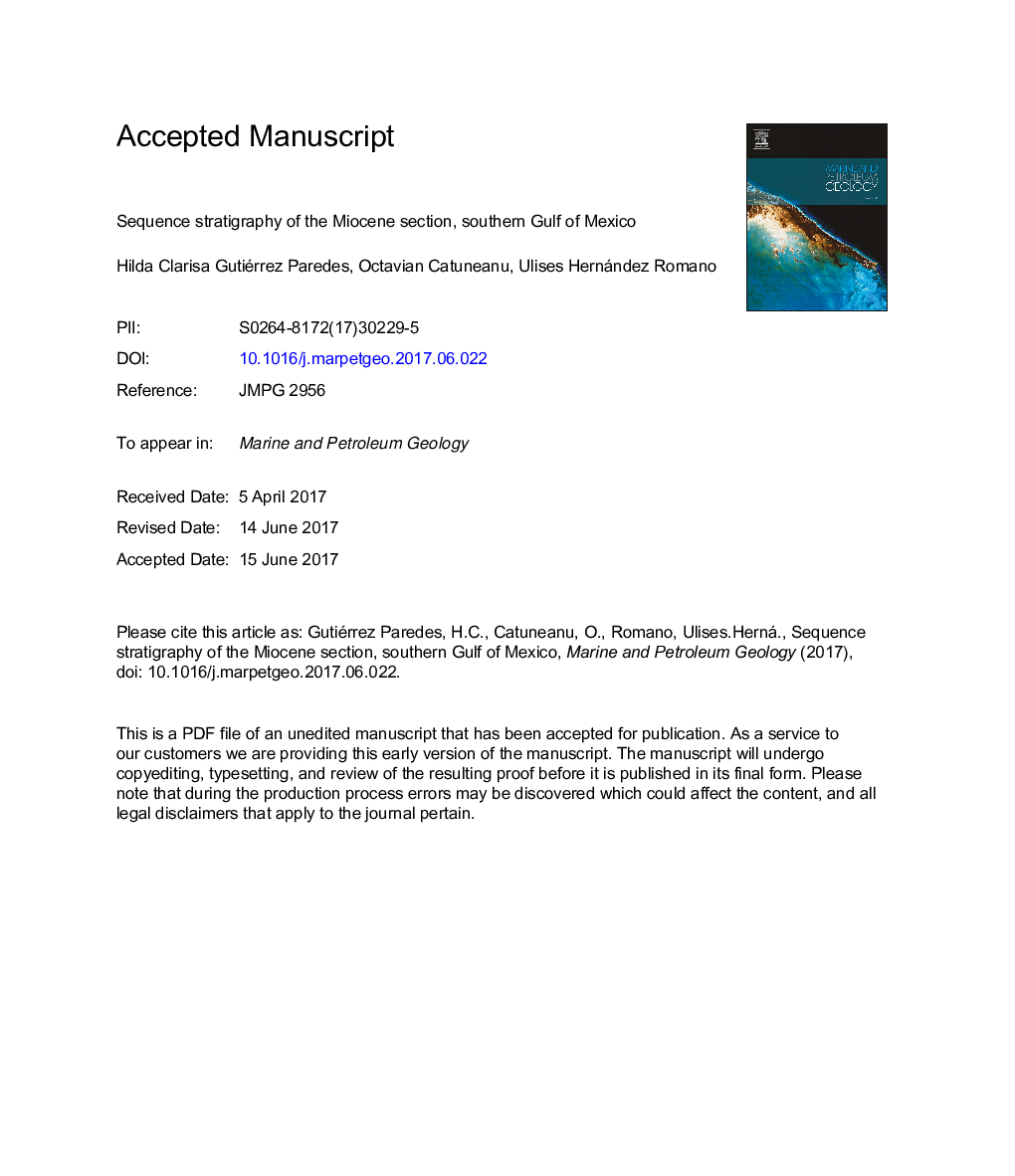| Article ID | Journal | Published Year | Pages | File Type |
|---|---|---|---|---|
| 5781960 | Marine and Petroleum Geology | 2017 | 69 Pages |
Abstract
Five genetic sequences were identified and eleven stratigraphic surfaces interpreted and correlated through the study area. The Oligocene-lower Miocene, lower Miocene and middle Miocene sequences were deposited in bathyal water depths, whereas the upper Miocene sequences (Tortonian and Messinian) were deposited in bathyal and outer neritic water depths. The bulk of the Miocene succession, from the older to younger deposits consists of mass-transport deposits (Oligocene-lower Miocene); mass transport deposits and turbidite deposits (lower Miocene); debrite deposits and turbidite deposits (middle Miocene); and debrite deposits, turbidite deposits and pelagic and hemipelagic sediments (upper Miocene). Cycles of sedimentation are delineated by regionally extensive maximum flooding surfaces within condensed sections of hemipelagic mudstone which represent starved basin floors. These condensed sections are markers for regional correlation, and the maximum flooding surfaces, which they include, are the key surfaces for the construction of the Miocene stratigraphic framework. The falling-stage system tract forms the bulk of the Miocene sequences. Individual sequence geometry and thickness were controlled largely by salt evacuation and large-scale sedimentation patterns. For the upper Miocene, the older sequence (Tortonian) includes sandy deposits, whereas the overlying younger sequence (Messinian) includes sandy facies at the base and muddy facies at the top; this trend reflects the change from slope to shelf settings.
Keywords
Related Topics
Physical Sciences and Engineering
Earth and Planetary Sciences
Economic Geology
Authors
Hilda Clarisa Gutiérrez Paredes, Octavian Catuneanu, Ulises Hernández Romano,
